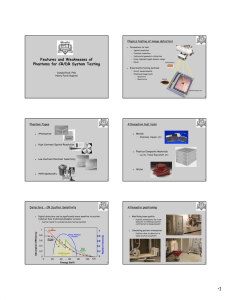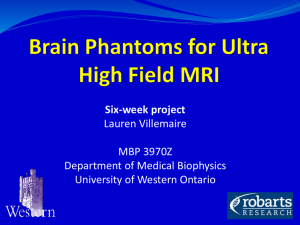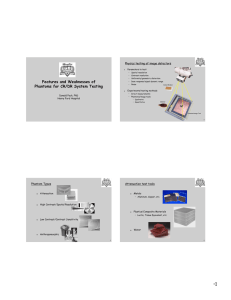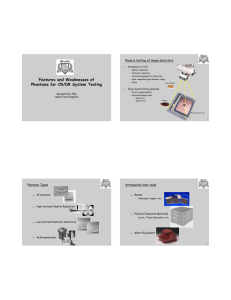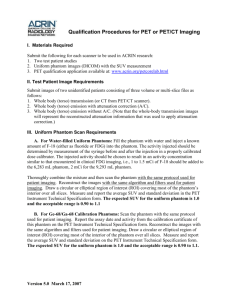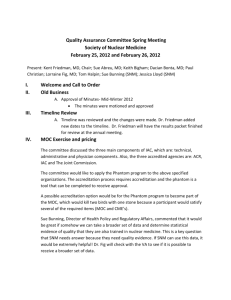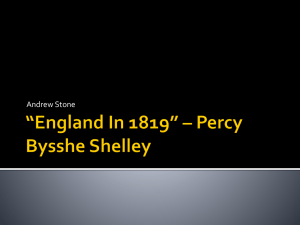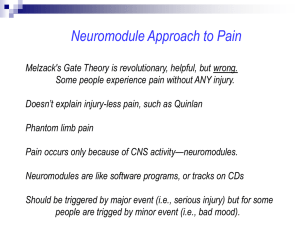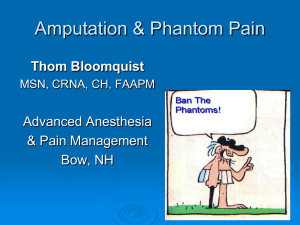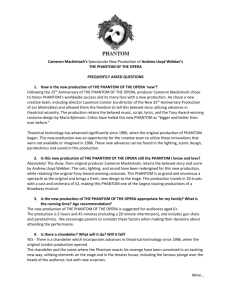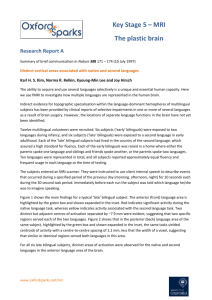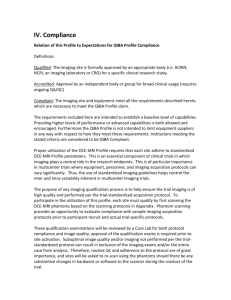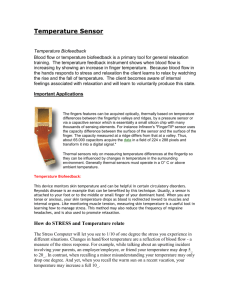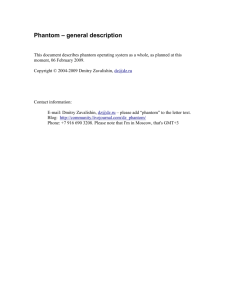Introduction to Monte Carlo Methods
advertisement
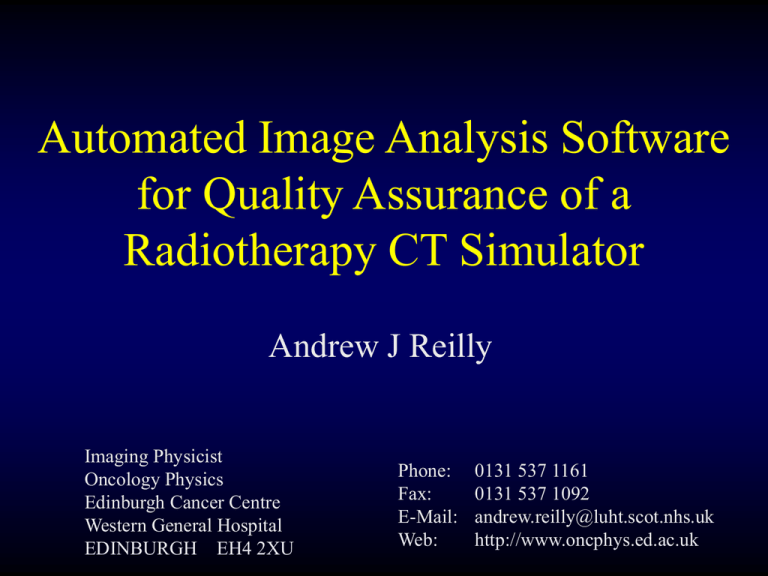
Automated Image Analysis Software for Quality Assurance of a Radiotherapy CT Simulator Andrew J Reilly Imaging Physicist Oncology Physics Edinburgh Cancer Centre Western General Hospital EDINBURGH EH4 2XU Phone: Fax: E-Mail: Web: 0131 537 1161 0131 537 1092 andrew.reilly@luht.scot.nhs.uk http://www.oncphys.ed.ac.uk Overview • • • • • Radiotherapy imaging RT Imaging QA: problems and solution Describe features of auto analysis software Demonstrate application to CT-Sim and Sim-CT Outline experience to date Imaging Modalities for RT • • • • • Simulator (fluoroscopy) CT-simulator Digitally Reconstructed Radiographs (DRRs) Simulator-CT (single slice and cone-beam) Electronic Portal Imaging Devices (EPIDs) • ‘Emerging’ • • • • Ultrasound MRI PET On treatment cone-beam CT and kV radiography Integrated System • Common RT Imaging QA: Essential Tests • Geometric Accuracy in 3D • In and out of image plane (pixel size, couch travel) • Mechanical alignments • Laser alignment • Image quality • Sufficient for purpose? • Consistent over time • Accurate physical information • CT number / HU calibration -> electron density • Testing of overall system • Geometrical co-registration • Transfer of image data The Problems… • • • • • Different tests are specified for different modalities Range of ‘equivalent’ test objects Most tests are only semi-quantitative Operator dependency Frequent (daily/fortnightly) comprehensive testing is required BUT most tests are time-consuming • Some imaging equipment performs too well! • Difficult to test integrated system. The Solution… • Develop single, uniform approach for all RT imaging modalities • + display devices, film processors, etc. • Robust, fully objective and quantitative • Analysis performed by computer • Results automatically stored in database for trend analysis, etc. The Approach 1. Develop Appropriate Phantom Signal 2. Acquire Image of Phantom Signal s1 s2 s1 s2 SNRin = s1 / s2 SNRout = s1 / s2 2 SNRout DQE f SNRin Determining the DQE Modulation Transfer Function (Phantom) 2 MTF DQE f K D NPS Dose and acquisition setting dependent. Noise Power Spectrum (Phantom) Varian Ximatron EX Sim-CT Additional Collimators Varian Performance Phantom A A A 1 WATER L R INNER INNER BONE BONE 3 WATER LUNG R 2 1 q 2 R L LR MTF 3 MTF CORT BONE A q AIR P P P P L Varian Uniformity Phantoms 44 cm 34 cm Polyurethane Casting HU -580 Geometry: Phantom Alignment • Detect phantom edge • Threshold at –580 • Trace edges and choose largest contour • Calculate COM • Compare against CT zero position Geometry: Pixel Size • Measure distance between holes • Use centre of phantom and expected pixel size to identify ‘seek area’ • Local minimum is centre of hole A 1 R 2 3 q P L Hounsfield Unit Calibration Electron DensityDuring Calibration Commissioning Baseline Values Measured 2500 ICRU 42 Ax, 80kV, 150mA Ax, 80kV, 300mA Ax, 120kV, 150mA Ax, 120kV, 300mA Ax, 140kV, 150mA Ax, 140kV, 250mA 2000 1500 CT Number 1000 500 0 0.0 0.5 1.0 1.5 -500 -1000 -1500 Electron Density Rel to Water 2.0 2.5 Hounsfield Unit Calibration A WATER R SOFT BONE LUNG L MTF HARD BONE AIR P Modulation Transfer Function • Calculate from impulse object MTF f FT PSF x OSF x PSF x DSF x FT OSF x FT PSF x FT DSF x FT OSF x MTF f FT DSF x Finite size (DSF) Calculation from Impulse Object Object Spread Function (From ALL pixels in ROI) Uniformity Phantom Analysis • Define Useful FOV (UFOV) as 90% FOV • Calculate: std dev Coefficien t of Variation, CoV mean pmax mean Integral Uniformit y, U mean pmin mean Integral Uniformit y, U mean pmax Differenti al Uniformit y, U d mean centre periphery Uniformity Index, U CT 1000 Uniformity Phantom Analysis Uniformity Profiles CT Sim: 50 cm FOV Sim-CT Urethane Norm Air Norm Noise Power Spectrum • Region of Interest from Uniformity Phantom • Remove DC component (subtract mean value) • Perform 2D FFT Re u, v Imu, v NPS u, v area 2 2 • Separation of stochastic noise NPSs NPS n n ROI n NPS n NPS Example • 100 images of Uniformity Phantom, 50 cm FOV Production of DRRs • Ray trace from virtual source of x-rays through stack of CT slices and model attenuation of beam. X-ray source SAD 100 cm isocentre Reference: Milickovic et al, Physics in Medicine and Biology (2000) 45:10;2787-2800 Projected back to isocentre Imaging Plane DRR Production Example CT Slices 3D array of voxels DRR Edinburgh DRR Phantom Software Demo Experience & Conclusions • • • • • New approach appears complicated, but… Significantly faster than previous methods More robust, fully objective and quantitative Greater confidence in results New ability to follow trends • Need to finalise DRR phantom • Expand to include other RT imaging modalities


